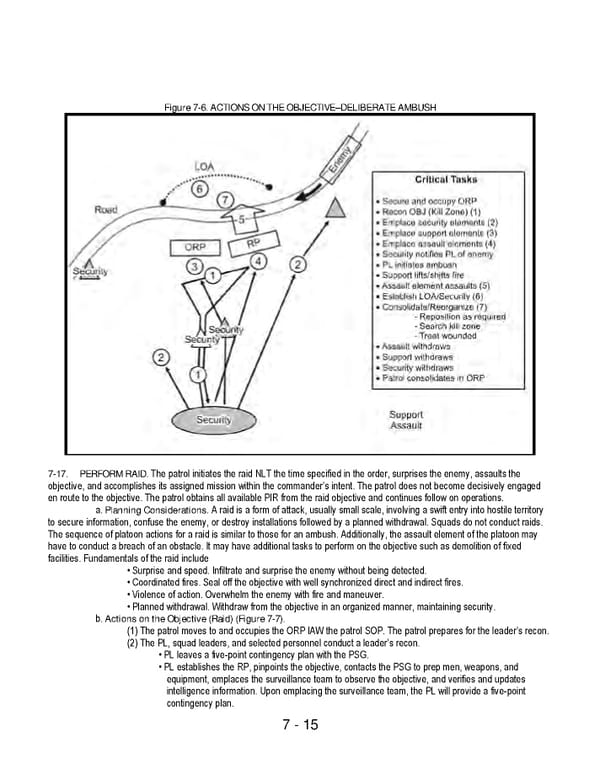7 - 15 Figure 7-6. ACTIONS ON THE OBJECTIVE–DELIBERATE AMBUSH 7-17. PERFORM RAID. The patrol initiates the raid NLT the time specified in the order, surprises the enemy, assaults the objective, and accomplishes its assigned mission within the commander’s intent. The patrol does not become decisively engaged en route to the objective. The patrol obtains all available PIR from the raid objective and continues follow on operations. a. Planning Considerations. A raid is a form of attack, usually small scale, involving a swift entry into hostile territory to secure information, confuse the enemy, or destroy installations followed by a planned withdrawal. Squads do not conduct raids. The sequence of platoon actions for a raid is similar to those for an ambush. Additionally, the assault element of the platoon may have to conduct a breach of an obstacle. It may have additional tasks to perform on the objective such as demolition of fixed facilities. Fundamentals of the raid include • Surprise and speed. Infiltrate and surprise the enemy without being detected. • Coordinated fires. Seal off the objective with well synchronized direct and indirect fires. • Violence of action. Overwhelm the enemy with fire and maneuver. • Planned withdrawal. Withdraw from the objective in an organized manner, maintaining security. b. Actions on the Objective (Raid) (Figure 7-7). (1) The patrol moves to and occupies the ORP IAW the patrol SOP. The patrol prepares for the leader’s recon. (2) The PL, squad leaders, and selected personnel conduct a leader’s recon. • PL leaves a five-point contingency plan with the PSG. • PL establishes the RP, pinpoints the objective, contacts the PSG to prep men, weapons, and equipment, emplaces the surveillance team to observe the objective, and verifies and updates intelligence information. Upon emplacing the surveillance team, the PL will provide a five-point contingency plan.
 Ranger Handbook Page 126 Page 128
Ranger Handbook Page 126 Page 128